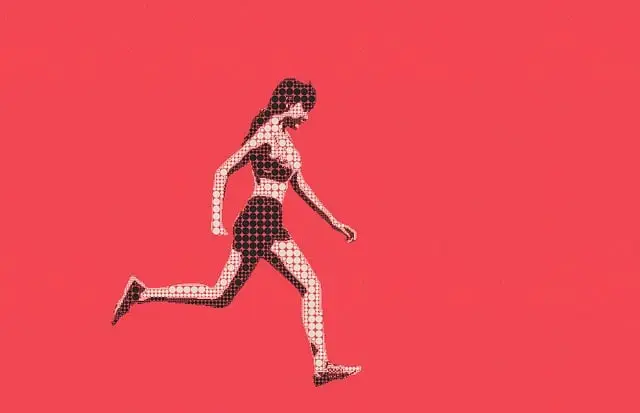Recent studies indicate that Kratom, specifically derived from Mitragyna speciosa leaves, may help alleviate sleep disturbances associated with insomnia due to its muscle-relaxing properties. The alkaloids 7-hydroxymitragynine and mitraphylline in Kratom interact with opioid receptors in the brain, potentially aiding restful sleep and easing discomfort for those with sleep issues compounded by stress. While Kratom shows promise as a natural remedy to enhance sleep quality, it is crucial to approach its use with caution, as more research is needed to understand its side effects fully. Any consideration of incorporating Kratom into insomnia treatment should be part of a comprehensive strategy that includes muscle relaxation techniques, which can synergize with Kratom's effects for better sleep quality. Users are advised to consult healthcare professionals before using Kratom, as its impact varies among individuals and proper medical supervision is essential for safe and effective use in managing insomnia.
navigating the complexities of insomnia often leads individuals to explore a myriad of treatment options, among them, Kratom and muscle relaxation techniques have garnered attention. This article delves into the scientific rationale behind Kratom’s potential as an insomnia treatment, assesses the effectiveness of muscle relaxation methods in addressing sleep disturbances, and offers insights on how to synergistically combine Kratom with these strategies to improve overall sleep quality. Join us as we unravel the interplay between natural remedies and relaxation practices in the quest for restful sleep.
- Exploring the Science Behind Kratom's Role in Insomnia Treatment
- The Effectiveness of Muscle Relaxation Techniques for Sleep Disturbances
- Integrating Kratom with Muscle Relaxation Strategies for Enhanced Sleep Quality
Exploring the Science Behind Kratom's Role in Insomnia Treatment

Recent scientific investigations have shed light on the potential benefits of Kratom, a botanical supplement derived from the leaves of Mitragyna speciosa, in addressing sleep disturbances associated with insomnia. Studies have indicated that certain strains of Kratom may possess properties conducive to muscle relaxation, which is often a critical component in promoting restful sleep. The alkaloids present in Kratom, such as 7-hydroxymitragynine and mitraphylline, are believed to interact with the brain’s opioid receptors, leading to a relaxing effect that can ease muscle tension and facilitate the onset of sleep. This muscle relaxation effect is particularly significant for individuals with insomnia who often experience heightened stress and physical discomfort that can disrupt their sleep patterns. The impact of Kratom on sleep quality is an area of ongoing research, with findings suggesting its potential role as a natural alternative in insomnia treatment regimens. However, it is crucial to approach the use of Kratom with caution due to its complex pharmacology and potential side effects, necessitating careful consideration within the context of a holistic treatment plan for insomnia.
The Effectiveness of Muscle Relaxation Techniques for Sleep Disturbances

Muscle relaxation techniques, including those involving natural supplements like Kratom, have garnered attention as a potential remedy for individuals grappling with insomnia and sleep disturbances. Kratom, derived from the leaves of Mitragyna speciosa, is known for its sedative properties at higher doses, which can facilitate relaxation and ease muscle tension—a common issue contributing to sleepless nights. Clinical studies have indicated that when used responsibly under a healthcare provider’s guidance, Kratom may aid in alleviating the physical stress that can prevent restful sleep. Moreover, incorporating progressive muscle relaxation exercises, where individuals tense and then release different muscle groups, can be a complementary approach to enhance the effectiveness of Kratom. This two-pronged method targets both the physiological and psychological aspects of insomnia, creating a more conducive environment for sleep. The combination of Kratom’s sedative effects and structured relaxation exercises can lead to improved sleep quality by reducing the time it takes to fall asleep and decreasing the likelihood of wakeful periods during the night. As with any treatment, consistency and the right dosage are crucial, and individuals should consult with a healthcare professional before integrating Kratom into their insomnia treatment regimen.
Integrating Kratom with Muscle Relaxation Strategies for Enhanced Sleep Quality

Kratom, a plant-based substance derived from the leaves of Mitragyna speciosa, has been increasingly recognized for its potential to aid in sleep quality, particularly when integrated with muscle relaxation strategies. Users report that kratom can alleviate muscular tension and induce a state conducive to restful sleep. Muscle relaxation techniques, such as progressive muscle relaxation or yoga, combined with kratom’s analgesic properties, can create a synergistic effect that effectively targets the discomfort and stress often associated with insomnia. This dual-approach not only promotes better sleep but also addresses the physiological aspects of sleep disturbance.
Moreover, the integration of kratom with targeted muscle relaxation strategies should be approached with caution, as individual responses to kratom can vary significantly. It is crucial for individuals to consult healthcare professionals before incorporating kratom into their insomnia treatment plan. The right dosage and strain of kratom, along with consistent relaxation practices, can enhance the quality of sleep by reducing the time it takes to fall asleep, improving sleep duration, and minimizing nighttime awakenings. These combined efforts aim to create a sustainable environment for restorative sleep, which is essential for overall health and well-being. Users are encouraged to explore the safest and most effective ways to use kratom as part of a holistic approach to managing insomnia symptoms in conjunction with professional medical advice.
In conclusion, the interplay between Kratom and muscle relaxation techniques presents a promising avenue for improving sleep quality in those suffering from insomnia. The scientific evidence supporting Kratom’s role in treating insomnia is compelling, yet it is imperative to approach its use with caution due to its regulatory status. Muscle relaxation strategies have shown effectiveness as a standalone treatment, and when combined with Kratom, they may synergistically enhance therapeutic outcomes. It is essential for individuals to consult healthcare professionals before integrating these methods into their sleep regimen, ensuring safe and effective practices. As research continues to evolve in this field, the potential for personalized insomnia treatment plans that include Kratom and muscle relaxation techniques holds great promise for better sleep health.






